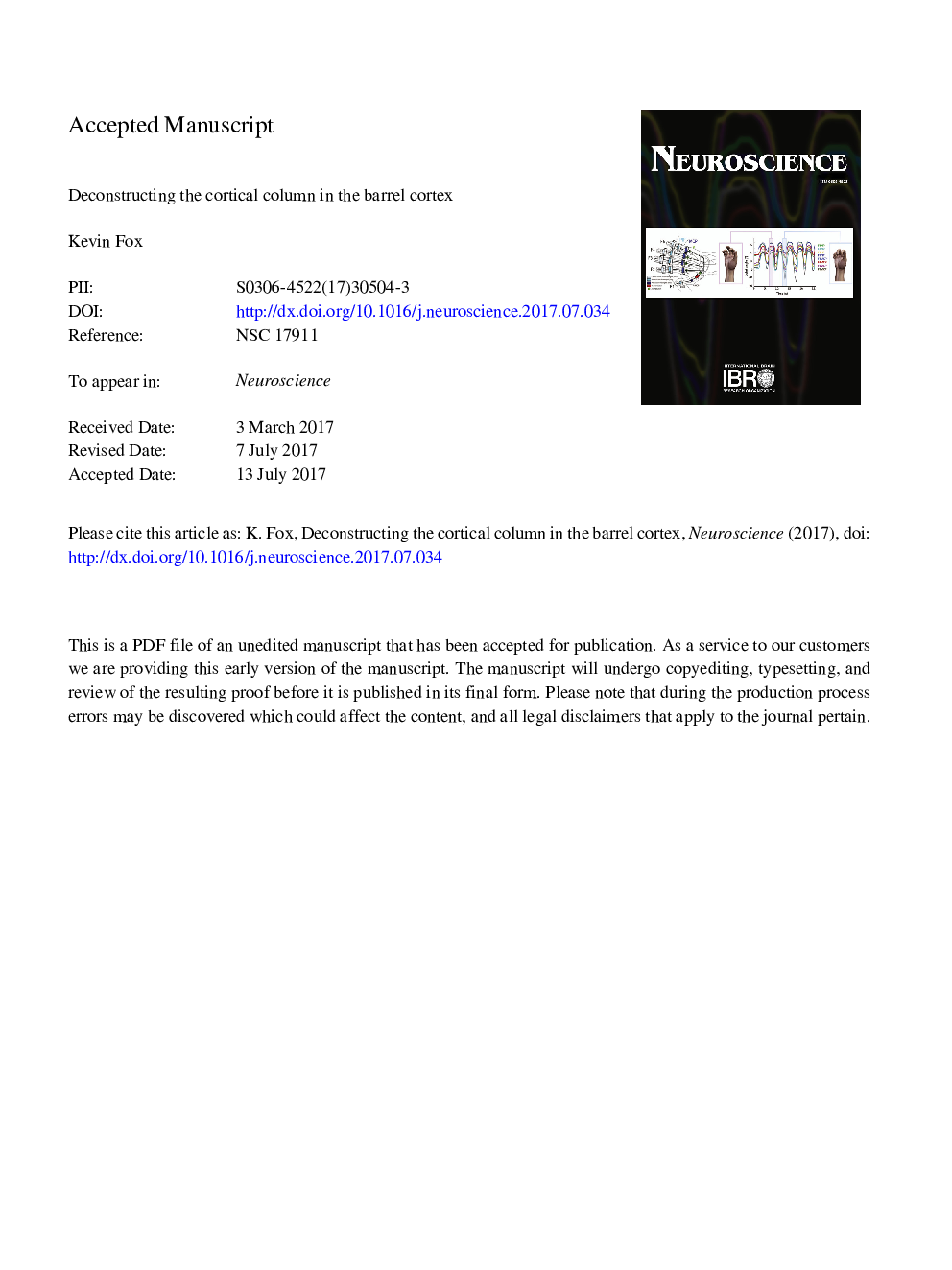| Article ID | Journal | Published Year | Pages | File Type |
|---|---|---|---|---|
| 8841199 | Neuroscience | 2018 | 32 Pages |
Abstract
The question of what function is served by the cortical column has occupied neuroscientists since its original description some 60Â years ago. The answer seems tractable in the somatosensory cortex when considering the inputs to the cortical column and the early stages of information processing, but quickly breaks down once the multiplicity of output streams and their sub-circuits are brought into consideration. This article describes the early stages of information processing in the barrel cortex, through generation of the center and surround receptive field components of neurons that subserve integration of multi whisker information, before going on to consider the diversity of properties exhibited by the layer 5 output neurons. The layer 5 regular spiking (RS) neurons differ from intrinsic bursting (IB) neurons in having different input connections, plasticity mechanisms and corticofugal projections. In particular, layer 5 RS cells employ noise reduction and homeostatic plasticity mechanism to preserve and even increase information transfer, while IB cells use more conventional Hebbian mechanisms to achieve a similar outcome. It is proposed that the rodent analog of the dorsal and ventral streams, a division reasonably well established in primate cortex, might provide a further level of organization for RS cell function and hence sub-circuit specialization.
Keywords
Related Topics
Life Sciences
Neuroscience
Neuroscience (General)
Authors
Kevin Fox,
